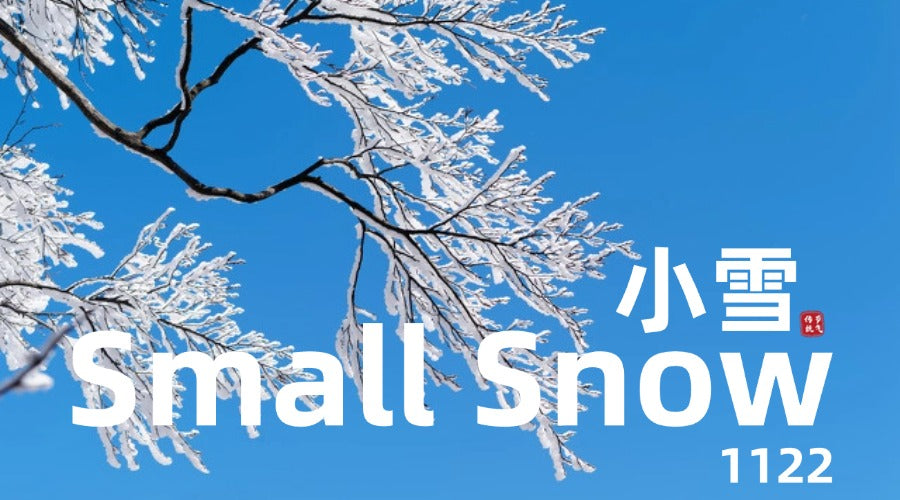
Finding Winter Magic in Ancient Chinese Wisdom
Share
As November whispers its last breaths across the East Coast, there's a special moment in Chinese tradition called "Small Snow" (小雪). It's not just a date on the calendar - it's nature's gentle reminder that winter's embrace is near. Just like our cozy brownstones in Boston or the quiet streets of Brooklyn after the first snow, this ancient wisdom feels right at home here.
Understanding Late November Weather
Along the US East Coast, late November marks a distinct shift in weather patterns that remarkably aligns with the Chinese "Small Snow" season (小雪). From Boston to Washington D.C., temperatures typically range from 35°F to 50°F (2-10°C), with some areas experiencing their first snowfall. The crisp air and shorter days create conditions very similar to those that inspired these traditional Chinese wellness practices.

Why I'm falling in love with Chinese winter wellness:
Picture this: You're wrapped in your favorite blanket, fireplace crackling (or your perfectly placed space heater humming), sipping a soul-warming tea that's been cherished for centuries. That's not just hygge - it's the essence of Chinese winter wellness, reimagined for our modern lives.
**New England Region**: Temperatures often drop below freezing at night, with occasional snow flurries
**Mid-Atlantic States**: Cold rain and occasional wet snow, with increasing indoor heating needs
**Coastal Areas**: Damp, chilly conditions that can penetrate to the bones, much like the conditions Chinese medicine traditionally addresses
Adapting Chinese Wellness for American Homes

- Fireplace Wellness:
- Position your favorite reading chair near the fireplace for 15-20 minutes of gentle back warming
- Create a cozy evening routine of stretching or gentle yoga near the hearth
- Use the fireplace area for family gathering and relaxation, promoting both physical and emotional warmth
- Indoor Climate Management:
-
Balance central heating with humidity control (30-50% ideal)
- Place houseplants like Boston ferns or spider plants to naturally humidify dry rooms
- Consider using a cool-mist humidifier in bedrooms
Seasonal Nutrition for Winter
Many traditional Chinese ingredients have local equivalents or are now readily available in American grocery stores:
Warming Soups and Broths:
- Transform classic chicken soup with Chinese yam and goji berries
- Add mushrooms like shiitake or local varieties to beef stews
- Incorporate root vegetables common to both cultures: carrots, turnips, and potatoes
Seasonal Local Foods That Align with TCM Principles:
- Northeast apples and pears (naturally cooling and moistening)
- Local root vegetables (grounding and nourishing)
- Atlantic seafood (especially black cod and mackerel for warming properties)
Practical Daily Meal Ideas
Breakfast:
- Oatmeal with black sesame seeds, walnuts, and a dash of cinnamon
- Whole grain toast with nut butter and local honey
- Warm congee with dried dates and ginger
Lunch and Dinner:
- Warming soups combining Eastern and Western ingredients
- Roasted winter vegetables with warming spices
-
Slow-cooker stews incorporating medicinal mushrooms
Fun fact:
Traditional Chinese medicine sees winter as a time for restoration, just like nature itself. Think of bears hibernating or trees drawing energy inward - we can learn so much from this ancient wisdom!
What I love most is how these centuries-old practices feel so relevant in our busy East Coast lives. Whether you're rushing through Manhattan's wind tunnels or working from your Washington DC apartment, these little rituals can bring so much peace to your daily routine.


